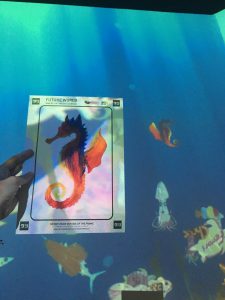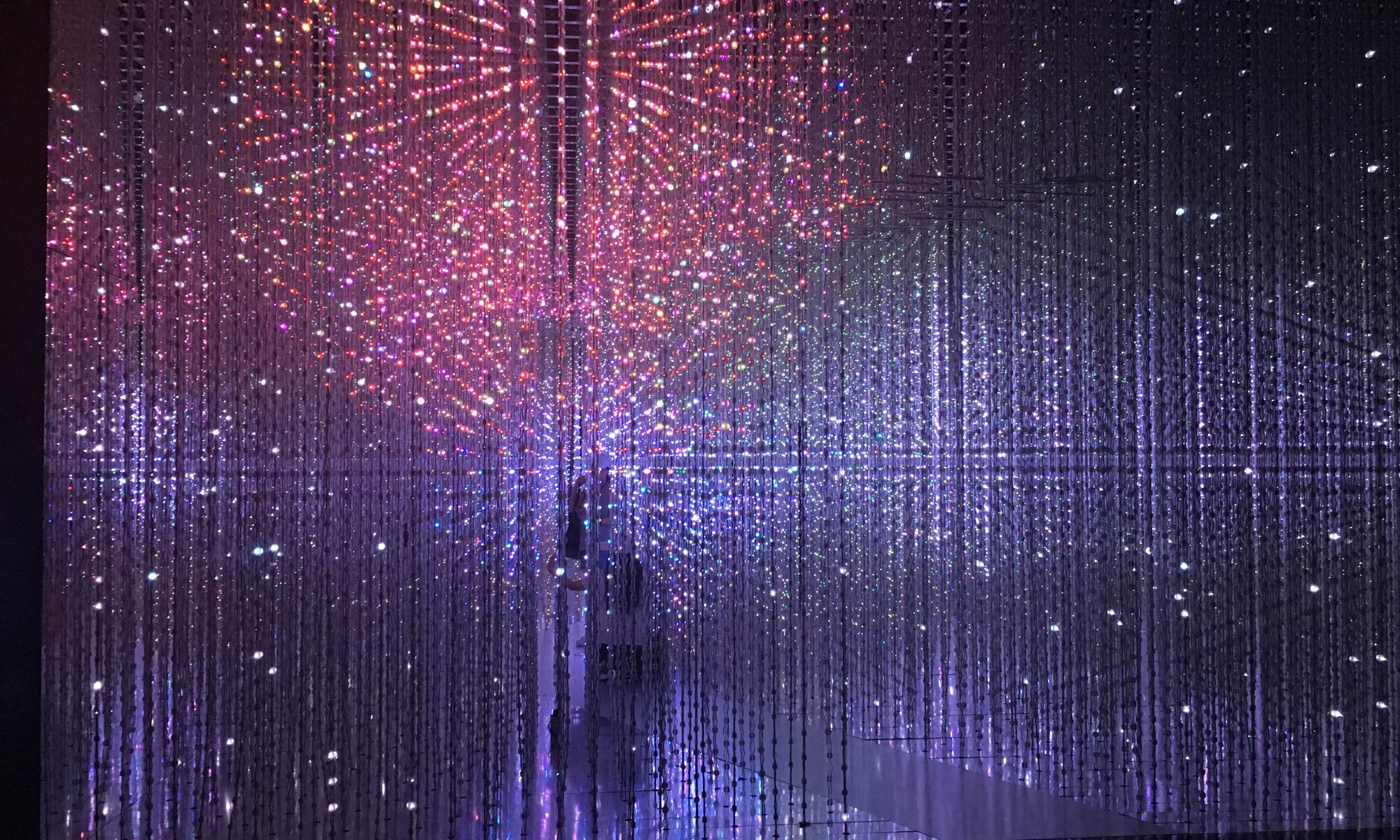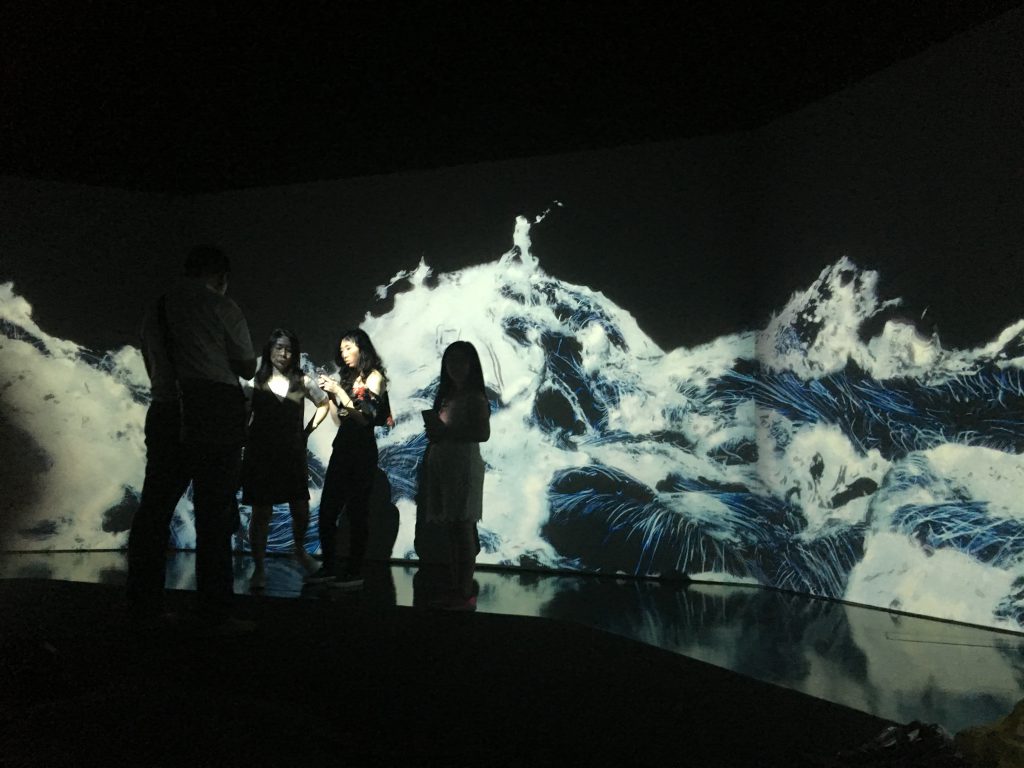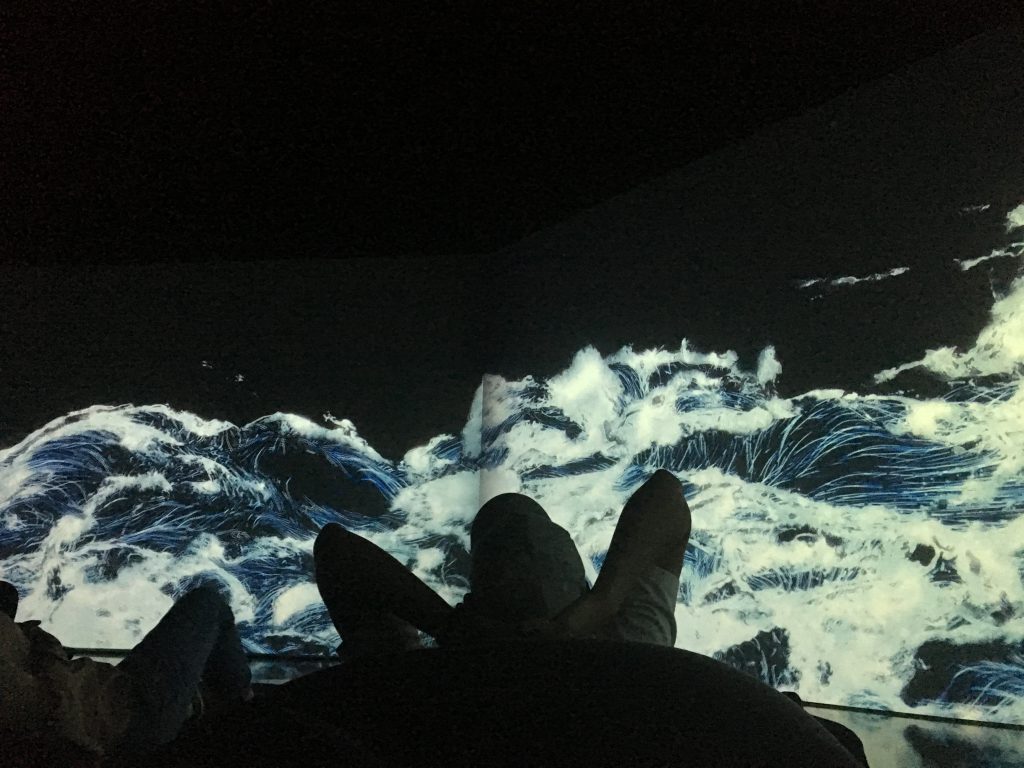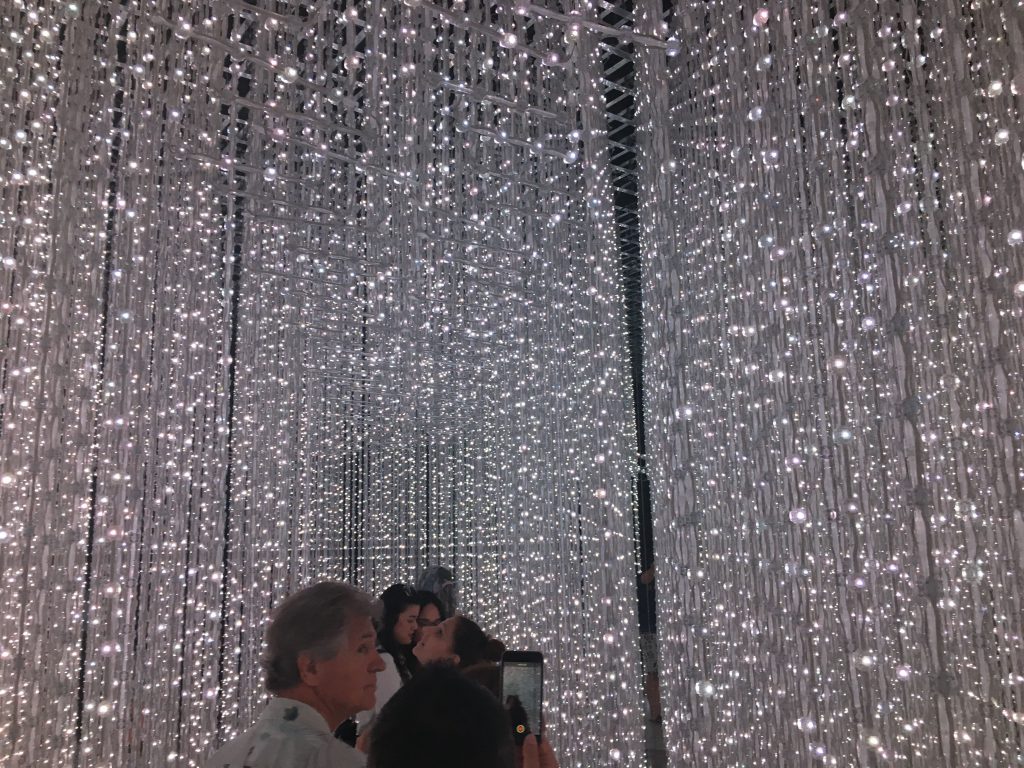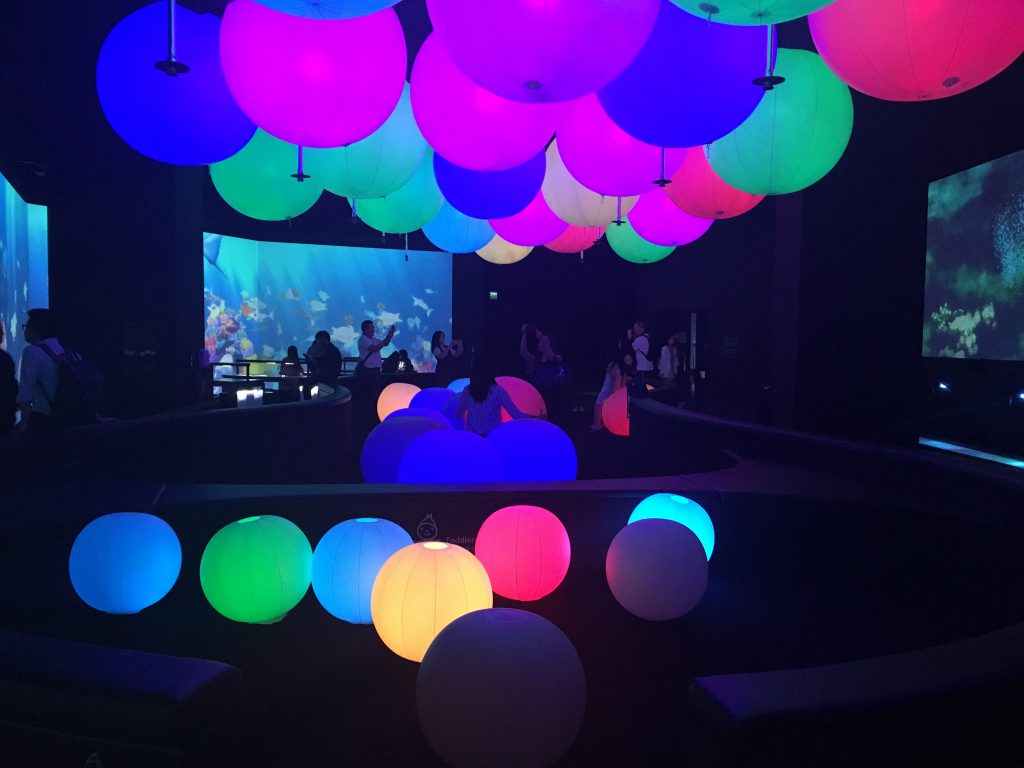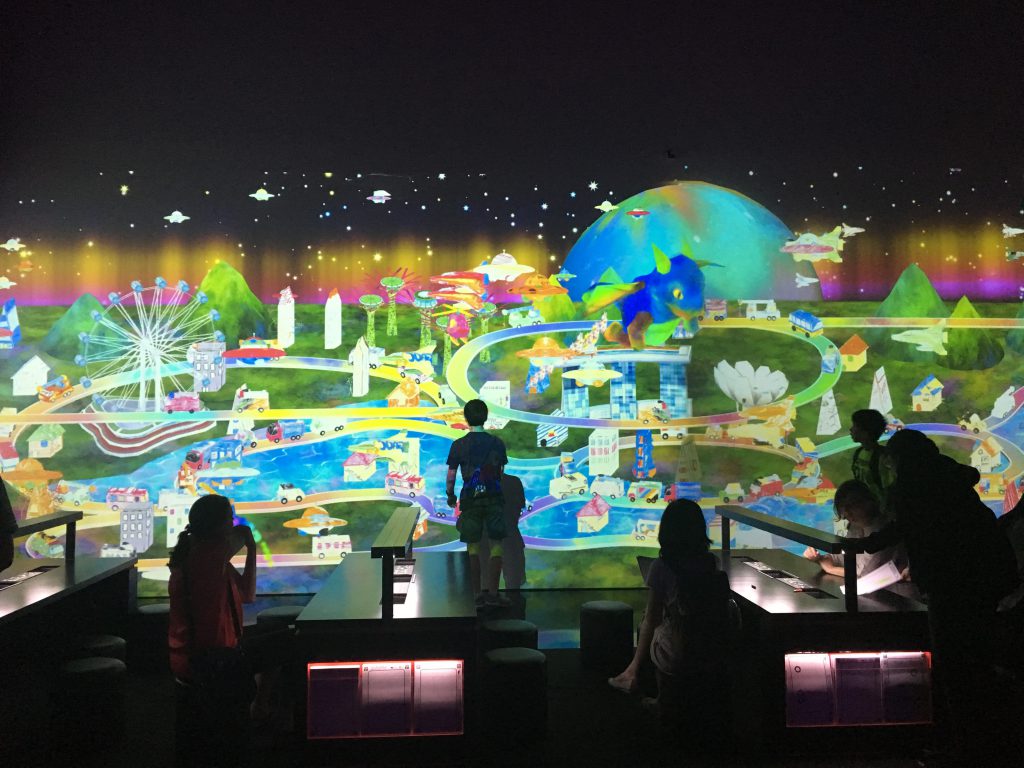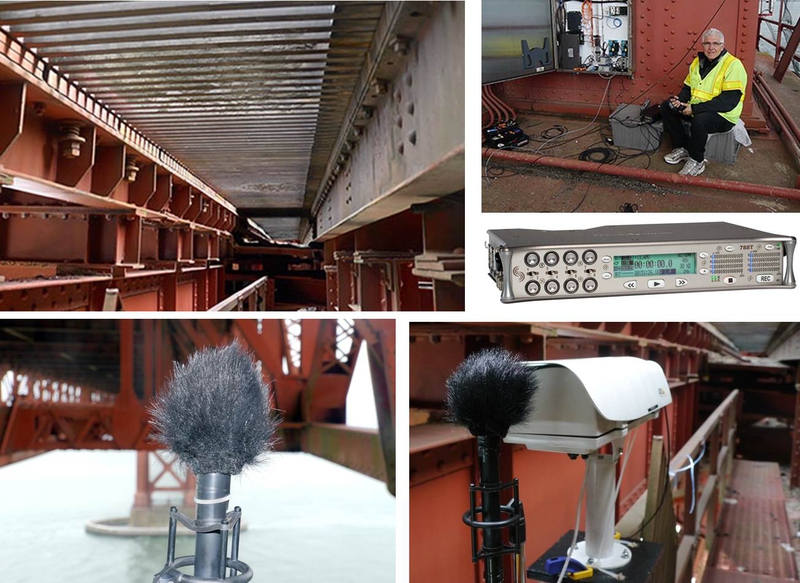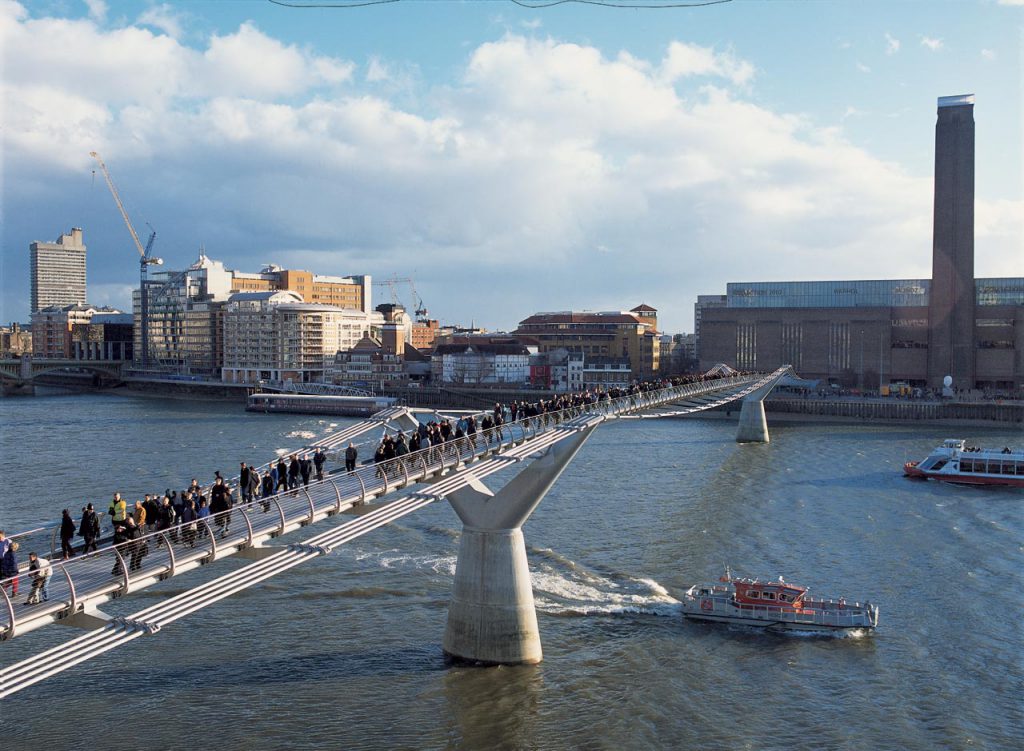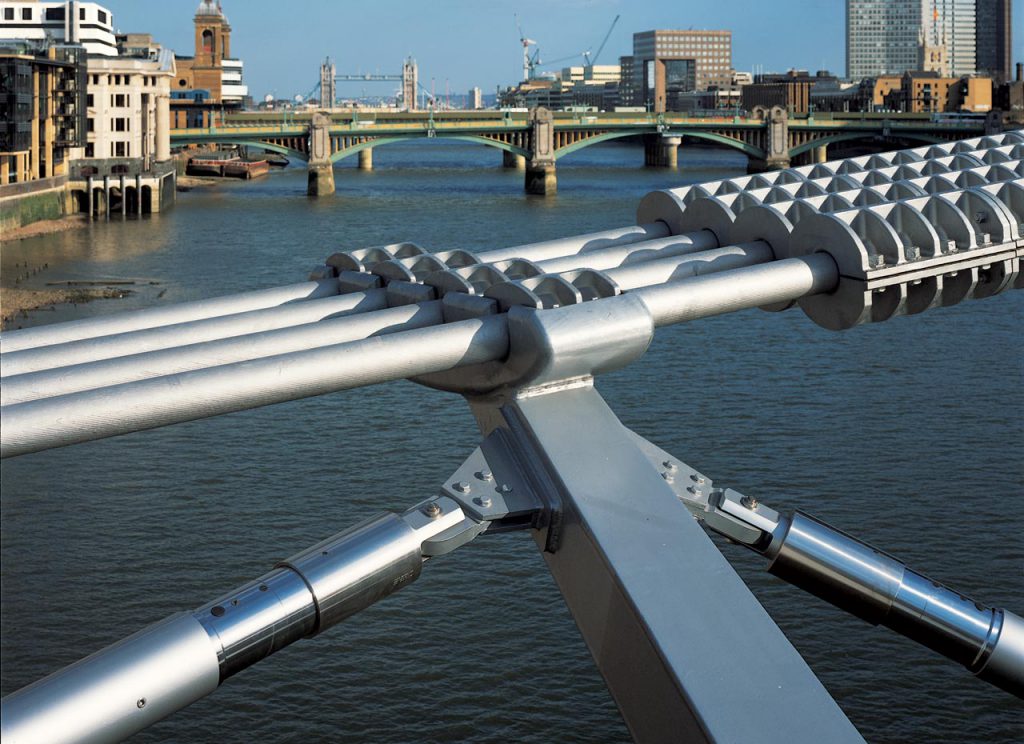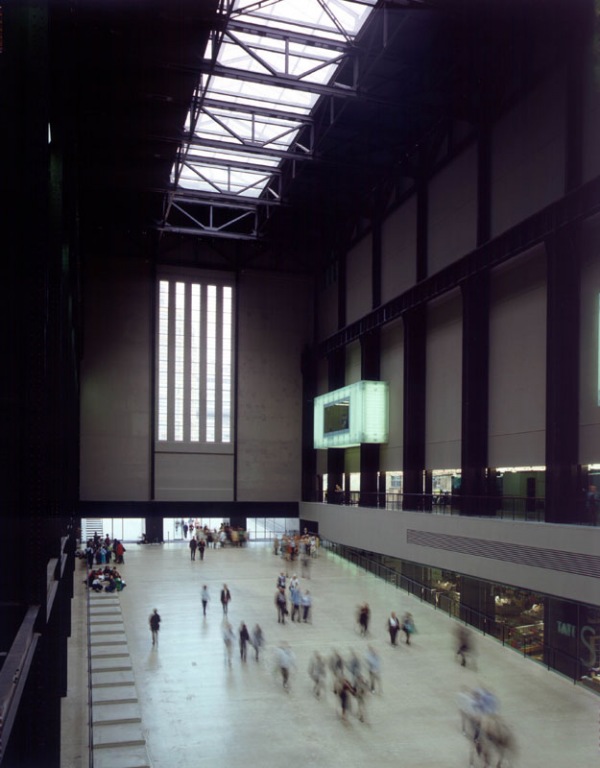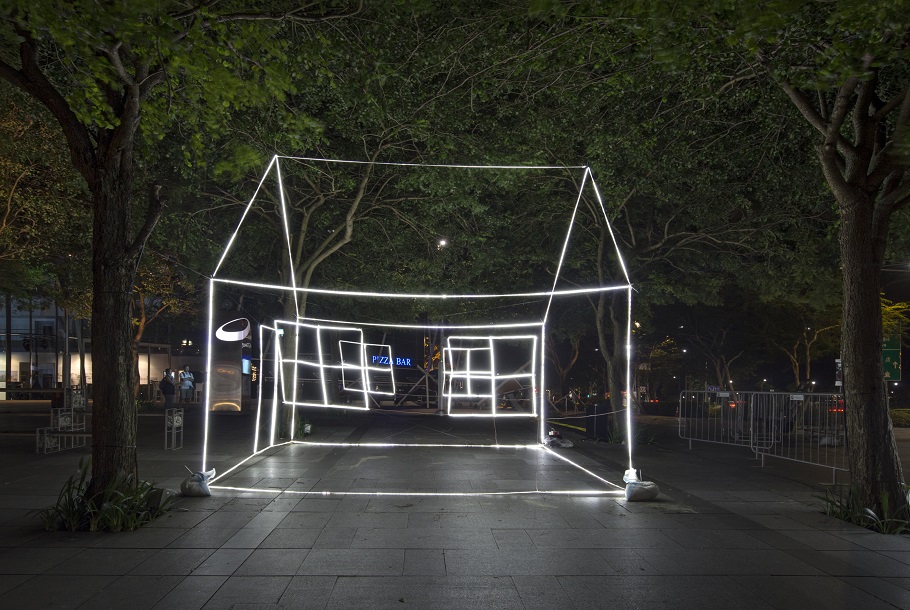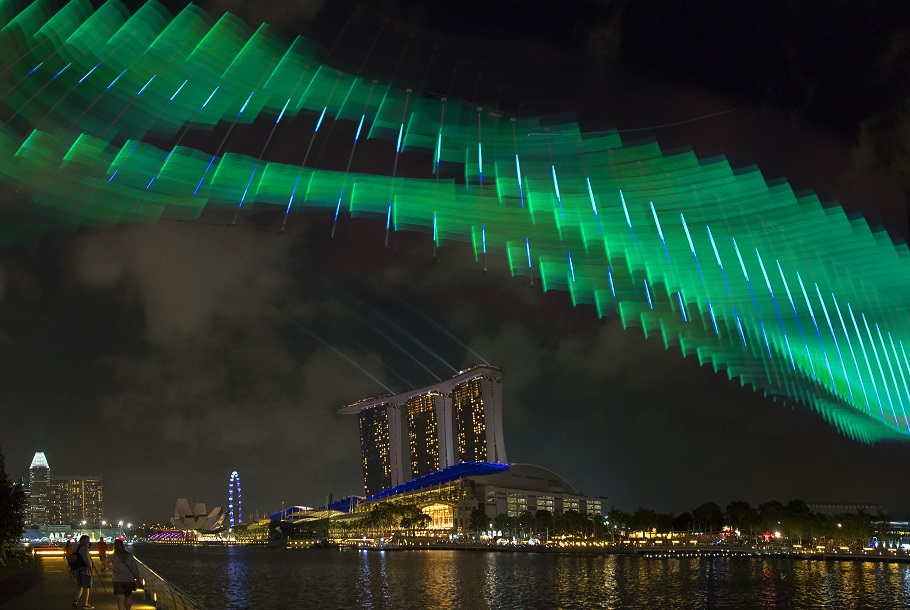As a kid, we had yearly passes to the Cincinnati Children’s Museum where I had the most fun playing in the rain forest playground and walking through the ice age exhibit. These exhibits were educational immersive environments, just as many museum exhibits are designed to be. However, FutureWorld at the ArtScience Museum in Singapore uses technology and interactivity to add depth, exploration, and delight to the learning and fun that comes with visiting the museum. I felt I was a kid again as we colored in the lines and then saw our drawings dropped in a 3D moving city. And as we went down the slide three times to see the flower projections move beneath us. Every installation in the exhibit was interactive in a way that allowed people of any age to enjoy the experience.
The installation that I enjoyed most was Black Waves, a 3D rendered looping video of waves rising and falling across three large wall panels. Watching the waves move in a way that mimicked real clashing waves, as if they were alive, was unbelievably calming. Similar to many of the installations, it was such a simple idea. A room whose walls are waves moving up and down. Yet, the technical precision of the 3D rendering, the pace of the waves, the sound paired with the video, and the Japanese style (like Hokusai’s prints!) in which the art was created all contribute to one of the most peaceful exhibit installations I’ve ever been to. Choosing a simple and pinpointed idea and executing it with great technical skill and precision seems to be what made so many of the installations in FutureWorld memorable.
Takasu from TeamLab – the group that designed FutureLab – talked about the importance of prototypes when working on a multidisciplinary team. In the past two weeks, working with the IEM students, and even within our ADM group, the value of showing visuals to convey ideas is clear. Full prototypes would be preferred but sometimes time only allows sketches or inspiration imagery. Visuals make sure team members are picturing the same image in their head and prototypes add a level of real interaction that can then be tested. These understandings will definitely be implemented in how our group works on our iLight project this semester.
I feel like we are always trying to find some greater purpose in our art and design. But some of the times it is just a pretty picture and usually it is not going to “save the world”. But art CAN make people feel, think, play, smile, experiment, and learn. Future World is a great example of how impactful art can be when combined with science to allow playing and learning through technology.
